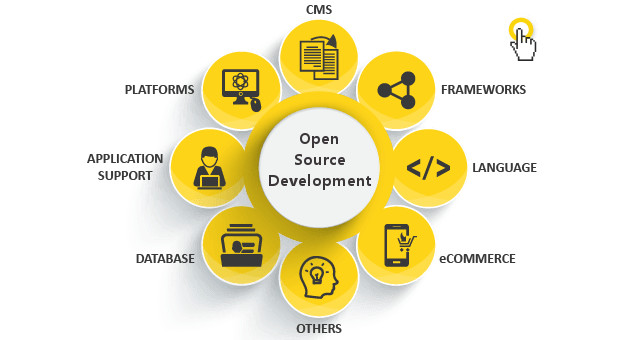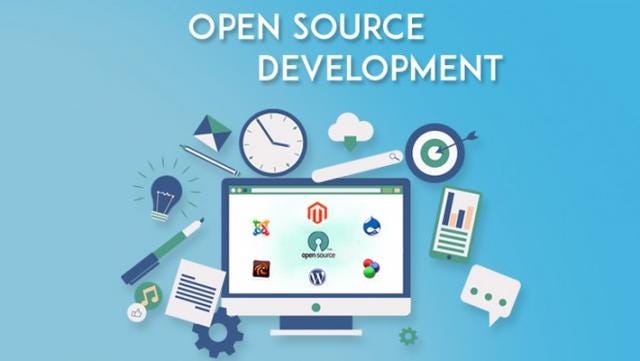JAKARTA, cssmayo.com – Open Source Development has become the backbone of modern technology, powering everything from web infrastructure and mobile operating systems to cutting-edge artificial intelligence and blockchain platforms. By making source code publicly accessible and inviting global collaboration, Open Source Development democratizes innovation and accelerates progress. In this comprehensive guide, I’ll explore the principles, benefits, challenges, and best practices that make Open Source Development a transformative force in the tech industry.
What Is Open Source Development?

Defining the Concept
Open Source Development refers to a software creation model where source code is released under licenses that permit anyone to view, modify, and distribute the software. Unlike proprietary development, where code remains confidential, Open Source Development embraces transparency and collective improvement.
Core Licensing Models
Licenses define how Open Source Development projects can be used and shared. Permissive licenses like MIT and Apache allow broad commercial use with minimal restrictions, while copyleft licenses such as GPL require derivative works to remain open source. Choosing the right license shapes your project’s adoption and community dynamics.
The Open Source Initiative
Founded in 1998, the Open Source Initiative (OSI) maintains the Open Source Definition—ten criteria that ensure software meets true open source standards. OSI-approved licenses guarantee freedom to use, study, modify, and share code, forming the foundation of legitimate Open Source Development.
Benefits of Open Source Development
Rapid Innovation and Iteration
When developers worldwide contribute to a codebase, innovation accelerates exponentially. Open Source Development harnesses diverse expertise, enabling rapid bug fixes, feature enhancements, and creative solutions that single organizations cannot match.
Cost Savings
Organizations adopting Open Source Development eliminate expensive licensing fees and reduce vendor lock-in. Free access to robust libraries, frameworks, and tools allows teams to allocate resources toward customization, support, and strategic initiatives.
Enhanced Security Through Transparency
Public code repositories invite continuous peer review. Security researchers identify vulnerabilities quickly, and patches disseminate rapidly across the community. This transparency often results in more secure software than closed-source alternatives, making Open Source Development a trusted choice for critical systems.
Building Developer Skills
Contributing to Open Source Development projects offers hands-on experience with real-world codebases, version control workflows, and collaborative practices. Developers build portfolios, earn recognition, and connect with mentors, accelerating career growth.
Community and Ecosystem Growth
Thriving Open Source Development communities foster knowledge sharing, mentorship, and networking. These ecosystems attract talent, drive adoption, and create vibrant marketplaces for services, support, and complementary products.
Key Principles of Successful Open Source Development
Transparent Governance
Effective Open Source Development projects establish clear governance structures that define maintainer roles, decision-making processes, and conflict resolution. Models range from benevolent dictatorships (single leader) to democratic committees and foundation oversight.
Comprehensive Documentation
High-quality documentation—README files, contribution guides, API references, architecture diagrams—lowers barriers to entry. New contributors quickly understand project goals, coding standards, and submission workflows, accelerating their first contributions.
Inclusive Community Culture
Welcoming contributors of all backgrounds and skill levels strengthens Open Source Development ecosystems. Codes of conduct, mentorship programs, and responsive maintainers create environments where everyone feels valued and empowered.
Version Control and Collaboration Tools
Platforms like GitHub, GitLab, and Bitbucket centralize Open Source Development workflows. Issue tracking, pull requests, code reviews, and continuous integration hooks streamline collaboration among distributed teams.
Practical Strategies for Fostering Collaborative Technology
Establish Clear Contribution Guidelines
Publish detailed guidelines outlining coding standards, commit message conventions, testing requirements, and review processes. Clear expectations maintain code quality and help contributors submit polished work in Open Source Development projects.
Label Beginner-Friendly Issues
Tag issues with labels like “good first issue” or “help wanted” to guide newcomers. Small, well-defined tasks help beginners gain confidence and gradually deepen their involvement in Open Source Development communities.
Implement Continuous Integration
Automate testing with CI/CD pipelines (Jenkins, GitHub Actions, Travis CI) that run on every commit. Automated tests catch regressions early, ensuring Open Source Development projects maintain stability as contributions scale.
Recognize and Celebrate Contributors
Publicly acknowledge contributions through release notes, contributor lists, blog posts, and social media. Recognition motivates ongoing participation and attracts new collaborators to your Open Source Development initiative.
Host Community Events
Virtual meetups, hackathons, and code sprints bring contributors together to tackle features, fix bugs, and brainstorm roadmaps. These events strengthen relationships and inject energy into Open Source Development projects.
Real-World Examples of Open Source Development Success
Linux Operating System
The Linux kernel exemplifies large-scale Open Source Development. Thousands of developers from corporations like Red Hat, Intel, and independent contributors maintain the kernel, powering servers, smartphones, IoT devices, and supercomputers globally.
Kubernetes
Google’s container orchestration platform became the industry standard through Open Source Development. A vibrant community contributes plugins, operators, and integrations, making Kubernetes the backbone of modern cloud-native infrastructure.
WordPress
Powering over 40% of websites worldwide, WordPress thrives on Open Source Development. A global community of developers, designers, and translators continuously enhances the platform, creating themes, plugins, and localization packages.
Mozilla Firefox
Mozilla’s browser champions user privacy and web standards through Open Source Development. Community contributions drive feature innovation, security audits, and cross-platform compatibility.
Challenges in Open Source Development
Maintainer Burnout
Many Open Source Development maintainers volunteer their time, leading to burnout as projects grow complex. Establishing sponsorship programs, foundation support, or corporate backing sustains long-term project health.
Managing Code Quality
With contributors spanning skill levels and time zones, maintaining consistent code quality requires disciplined review processes, automated testing, and clear architectural guidelines in Open Source Development workflows.
Security Vulnerabilities
While transparency aids security, high-profile vulnerabilities (Heartbleed, Log4Shell) underscore the need for dedicated security audits, responsible disclosure policies, and rapid patching in Open Source Development projects.
Licensing Conflicts
Mixing incompatible licenses can create legal headaches. Open Source Development teams must carefully audit dependencies and ensure license compatibility to avoid compliance issues.
Best Practices for Sustaining Open Source Development Projects
Diversify Funding Sources
Explore sponsorships (GitHub Sponsors, Open Collective), grants (Mozilla MOSS, Linux Foundation), and corporate partnerships to fund maintainers and infrastructure. Financial sustainability ensures Open Source Development projects thrive long-term.
Foster Transparent Communication
Use mailing lists, forums, or chat channels (Slack, Discord, Matrix) to discuss roadmaps, design decisions, and community concerns. Transparent communication builds trust and aligns contributors around shared goals in Open Source Development.
Invest in Onboarding
Create onboarding documentation, video tutorials, and mentorship pairings to help new contributors navigate codebases and workflows. A smooth onboarding experience converts curious visitors into committed Open Source Development collaborators.
Conduct Regular Security Audits
Partner with security firms or leverage bug bounty programs to identify vulnerabilities. Proactive security practices protect users and maintain trust in your Open Source Development project.
Measure and Celebrate Milestones
Track metrics like contributor growth, issue resolution time, and release frequency. Celebrate milestones with blog posts, virtual parties, and swag to reinforce community spirit in Open Source Development ecosystems.
Conclusion
Open Source Development has fundamentally reshaped the technology landscape by fostering collaboration, transparency, and innovation at unprecedented scales. By embracing clear governance, comprehensive documentation, inclusive cultures, and sustainable practices, projects harness the collective intelligence of developers worldwide. Whether you’re launching a new Open Source Development initiative or contributing to an established ecosystem, remember that collaboration thrives on trust, recognition, and shared purpose. Together, we build the future—one commit, one pull request, one community at a time.
Elevate Your Competence: Uncover Our Insights on Techno
Read Our Most Recent Article About IT Management: Overseeing Technology Operations!




